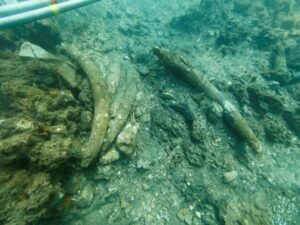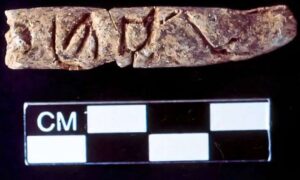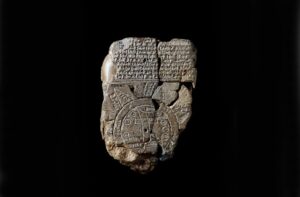On Yttygran Island, just off the Chukotka Peninsula in Siberia, there is an eerie sight. For 550m, huge, incredibly heavy whale bones are scattered along the coastline, forming a sort of alley. We still aren’t certain who put them there, or why.
Features
Whale Bone Alley is often compared to other monumental sites, like Stonehenge and the Pyramids of Giza.
It contains around 50 whale bones, all belonging to bowhead whales, despite other species also inhabiting the waters around the peninsula. Each bone weighs around 300kg and the bones include whole jawbones, ribs, and vertebrae. Seemingly intentionally, the bones are placed in a line a few meters apart from each other.

Whale bones dating to the 14th century. Photo: Shutterstock
Despite the weight of the bones, whoever built the alley buried them deep into the ground and reinforced them with stones and additional soil at the base. Most of the bones are grouped in twos or fours.
The site also contains pits that might have stored meat; remnants of blubber remain in the soil. The bones date from the 14th to 17th century.
Excavations and Yupik culture
Discovered in 1976 by Soviet archaeologists, Whale Bone Alley is in a secluded area traditionally occupied by the Yupik. The Yupik live in Alaska and Siberia and share similarities with the Inuit. Yet the Yupik don’t seem to have a definitive answer about the history of Whale Bone Alley.
According to Penn Museum, three further expeditions to Whale Bone Alley took place, in 1977, 1979, and 1981. Archaeologists searched the surrounding area as well as other islands but found no other bone deposits, just meat pits. There are over 120 of these cone-shaped meat pits, each around two meters deep.

Multiple rib bones stuck into the ground. Photo: Yandex/Earthly Mission
Some theorize that the alley was once a gathering place for worship. The long line of bones suggests a pilgrimage site or a pathway leading to a building, temple, or shrine. But only large boulders lie at the end of the alley. Did people process through the alley before completing some sort of sacrificial ritual? There is no indication of permanent settlement on the island.
Bowhead whales have been an essential part of the Yupik diet for centuries. They hunted them for food, fuel, and other materials for the last two millennia. Interestingly, Yttygran Island is called Sikliuk in the Yupik language, which translates to “meat pit.” Therefore, many historians concluded that Whale Bone Alley was simply an area where the Yupik slaughtered, stored, and traded whale meat.
The 14th century was characterized by the Little Ice Age, a cold period that caused a shortage of food. Times of shortage might call for mass preparation of meat for difficult times ahead.

A whalebone arch. Photo: GTW/Shutterstock
Other whalebone monuments
Whale bones have great significance in many parts of the world. It is not uncommon for some towns to house a whalebone arch as a decorative, commemorative, or symbolic addition. They even show up in the most unexpected places. Egypt has a “Whale Valley” called Wadi al-Hitan, which contains a considerable number of whale fossils and bones scattered along the desert floor. However, these remains are much older, dating to prehistoric times.
Whale bones are also used ritualistically, particularly in Japan. You can find them in many shrines to appease deities. The Japanese believe whales hold spiritual abilities.
In Barrow, Alaska, a giant whale bone arch marks the beginning of the Arctic Ocean. They call it the “Gateway to the Arctic” and it highlights the area’s whaling history.






